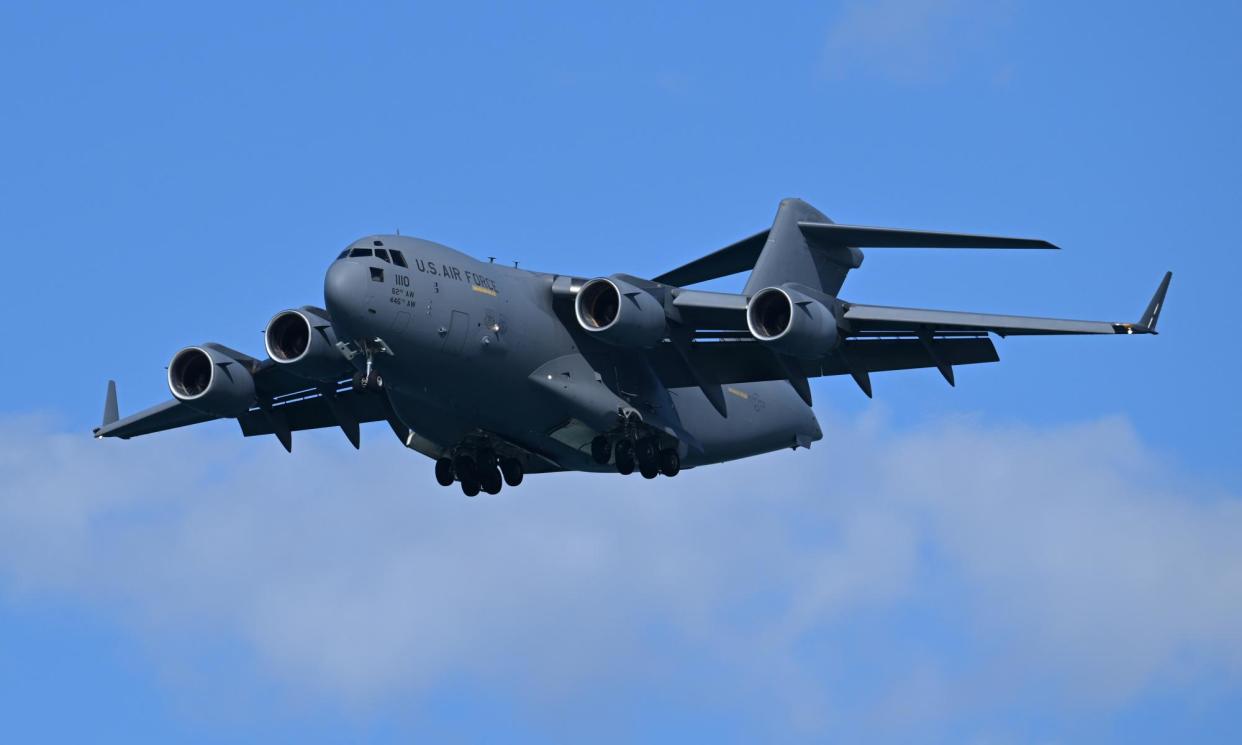US arms advantage over Russia and China threatens stability, experts warn

The US and its allies are capable of threatening and destroying all of Russia and China’s nuclear launch sites with conventional weapons, creating what two experts describe as a potentially unstable geopolitical situation.
Prof Dan Plesch and Manuel Galileo, from Soas University of London, describe a “quiet revolution in military affairs” reflecting increased US military power relative to Moscow and Beijing, particularly in missile technology.
They argue that this could create the conditions for a fresh arms race as China and Russia try to respond – and even create a risk of miscalculation in a major crisis as either country could resort to launching nuclear weapons to get ahead of the US.
Related: China suspends nuclear talks with US over arms sales to Taiwan
In a paper published on Thursday, Plesch and Galileo write that the US has “a plausible present day capacity with non-nuclear forces to pre-empt Russian and Chinese nuclear forces” – giving it a military edge over the two countries.
There are, the authors estimate, 150 Russian remote nuclear launch sites and 70 in China, approximately 2,500km (1,550 miles) from the nearest border, all of which could be reached by US air-launched JASSM and Tomahawk cruise missiles in a little more than two hours in an initial attack designed to prevent nuclear weapons being launched.
“The US and its allies can threaten even the most buried and mobile strategic forces of Russia and China,” the authors write, with an estimated 3,500 of the JASSM and 4,000 Tomahawks available to the US and its allies.
New developments also mean that JASSMs (joint air-to-surface standoff missiles) can be launched on pallets, using the Rapid Dragon system, from unmodified standard military transport aircraft, such as the C-17 Globemaster or C-130 Hercules.
“Our analysis predicts that only Russian mobile and Chinese deeply buried strategic systems may be considered at all survivable in the face of conventional missile attacks and are far more vulnerable than usually considered,” they add.
Plesch and Galileo argue there is insufficient public discussion about the strategic capabilities of the US if there were to be a major confrontation, arguing that debates about a conflict involving Russia and China tend to be focused on regional dynamics, such as the war in Ukraine or a possible invasion of Taiwan.
“US global conventional firepower is underestimated, which threatens both the realities and the perceptions of strategic stability,” they write, adding that any hybrid use of nuclear weapons alongside conventional missiles would complicate an already fraught picture.
Though few believe a major confrontation between the US and either Russia or China is possible, the invasion of Ukraine has dramatically increased global uncertainty. The Russian president, Vladimir Putin, warned in March that Moscow would be willing to use nuclear weapons if its sovereignty or independence was threatened.
The two authors argue that a strategic concern is whether Russia or China fear the US’s military capabilities to the point where they justify a new arms race. “The US 2024 Threat Assessment itself highlighted Chinese fear of a US first strike as motive for Chinese nuclear arms buildup,” they said.
The strength of the US conventional missile capabilities is such that it “pressures Russia and China to put their missiles on hair trigger”, ready to be launched immediately, the authors write. “The US would be on the receiving end for any mistaken launch one of them makes,” they add.
Last year, China began deploying a small number of nuclear weapons – a total of 24 – with their launchers, according to research from the Stockholm International Peace Research Institute – and the US warned it may have to increase the size of its deployed warheads in response.
Plesch and Galileo warn that the changes in military power come at a time when arms control is declining. In 2019, the Intermediate-Range Nuclear Forces arms control treaty, which had prohibited the US and Russia from having ground-launched missiles with ranges of 500 to 5,500km, was allowed to lapse – leaving both sides to redeploy them.
They argue the emerging situation justifies a renewed focus on arms control, as suggested by the UN secretary general, António Guterres, in July 2023, when he called for a special session of the UN general assembly to be held on disarmament.


